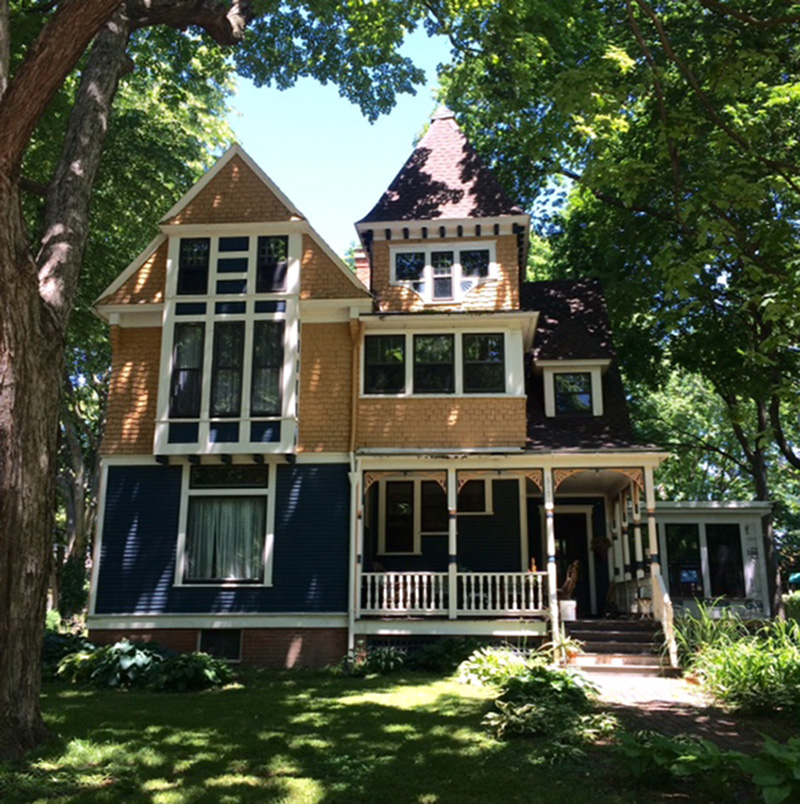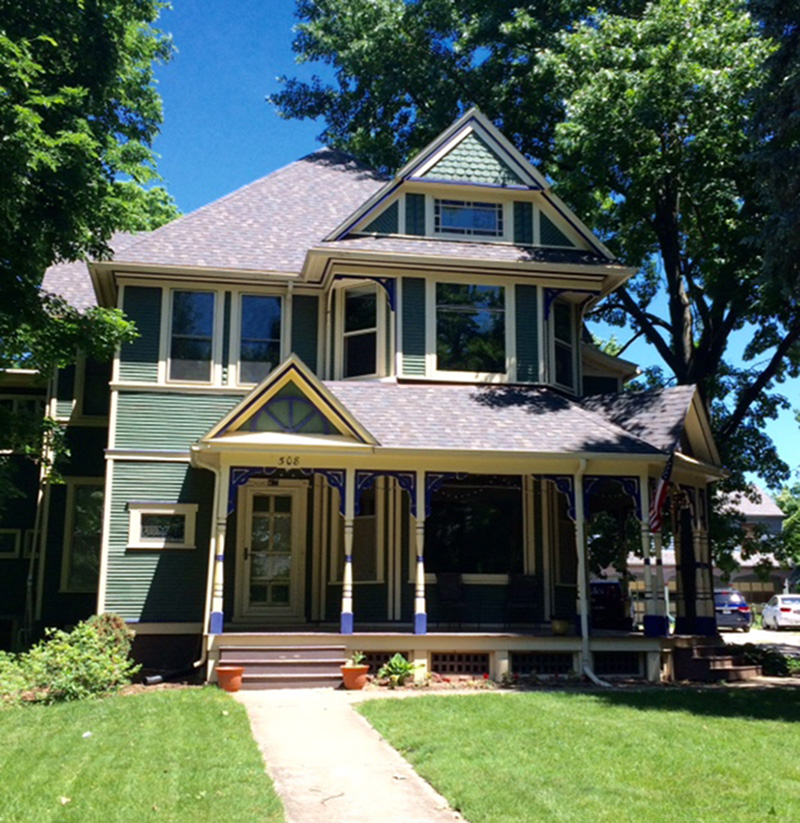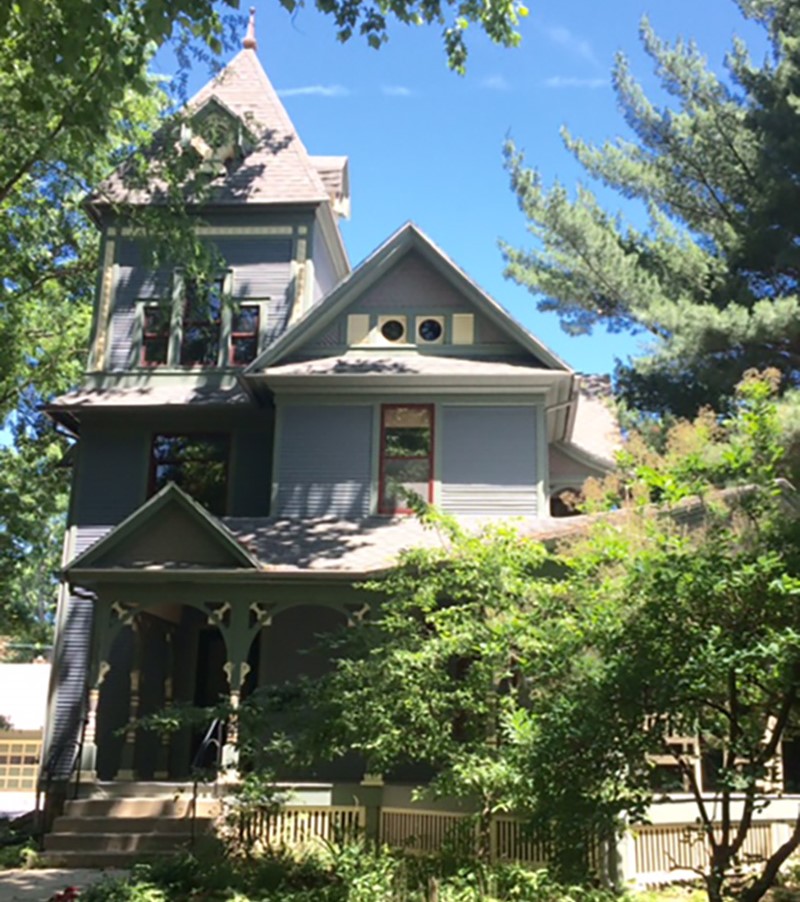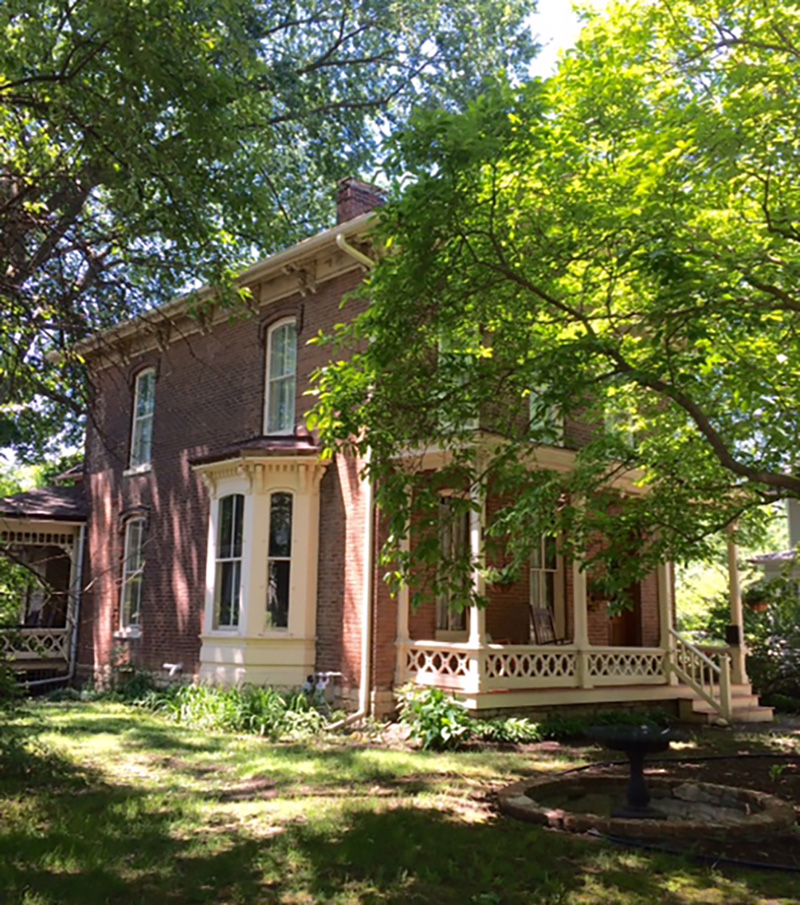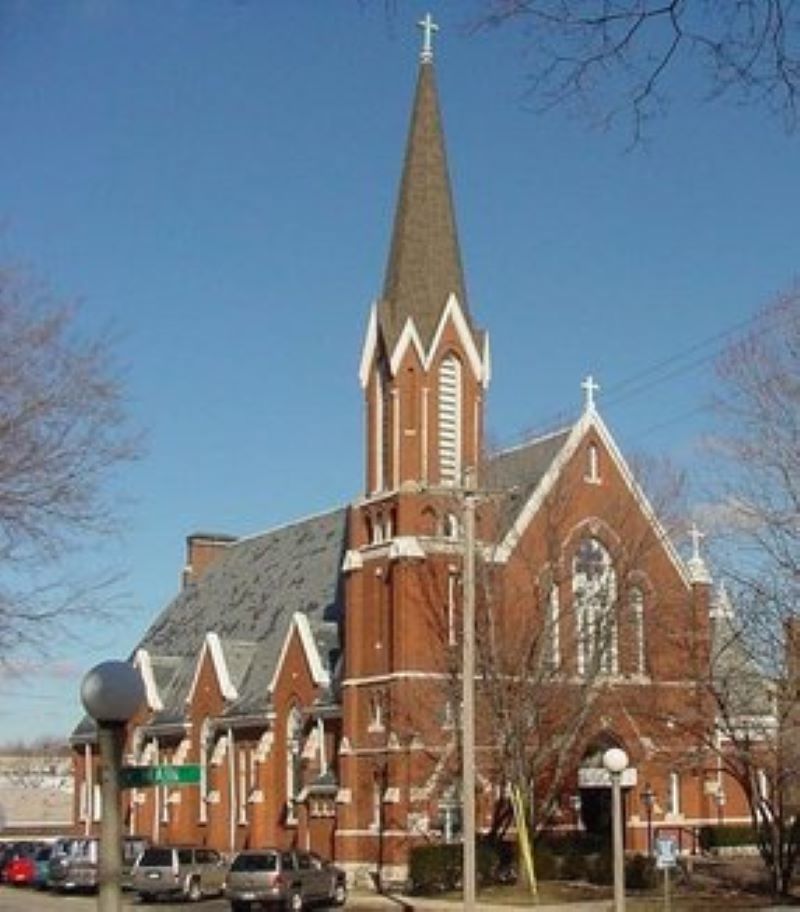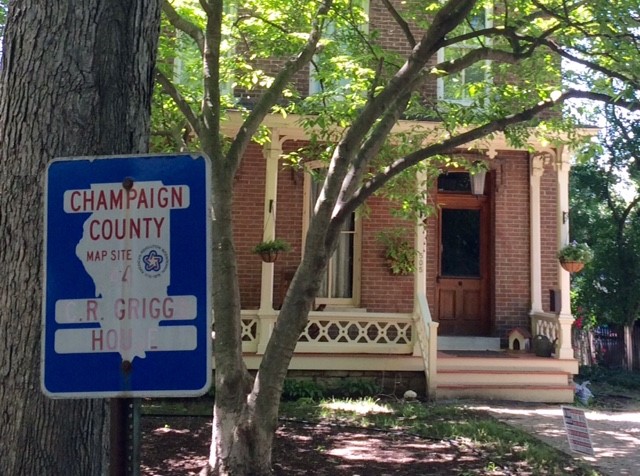
West Main Street from downtown to Lincoln Avenue is of the most enchanting and historic few blocks’ drive in Urbana. Nearly canopied by the surrounding trees in full leaf, the old brick-paved street is an experience to savor on a summer day. A host of lovingly-restored Victorian and Queen Anne residences that line the way draw you back in time.
In this episode of “Historic Sites Re-visited,” we set off from Urbana’s birthplace along the Boneyard Creek (see previous post) to find a cluster of homes in the 500 block of West Main that received the official 1976 designation. A few blocks from where Main Street and Springfield Avenue separate, on the north side of Main, three residences in a row (510, 508, 506 W. Main) were designated Historic Sites #41-43. The 1976 Historic Sites book called them the Wahl (510), Yearsley (508), and Marriott (506) Houses after the three men, connected by marriage, who built them in the early 1890s. The houses are profiled in an episode of the “In Lincoln’s Shadow, Urbana IL” series on YouTube.
Louis Wahl was identified in the video as “a local saloon owner.” Brothers-in-law Emmett Yearsley and Frank Marriott were “farmers and real estate speculators.” Wahl purchased these lots from original owner Samuel T. Busey and built his striking Queen Anne home there in 1890. Emmett and Alma Yearsley built their home in 1893. The Historic Sites description reads, “The basic form of this house evolves from the Victorian Italianate style [with] details and finishes from the Queen Anne style.” This house, like the other two, originally had a Queen Anne tower that was removed sometime prior to 1976.
The Marriott House was also constructed in 1893 in the Queen Anne style. It’s distinctive features include a “large, cubic asymmetrically placed tower [and] wide veranda” (Historic Sites). All three homes have been beautifully restored and maintained, with intact exterior and interior features exemplary of the time of their construction. When these three fine residences were completed, the Champaign County Herald proudly declared, “On West Main Street are three homes that would do honor to Chicago or any other city.”
Across the street at 505 W. Main is Historic Site #44, the Clark R. Griggs House (right, and also title photo above). Built two decades before the others, it is quite different than the elaborate ladies it faces. Historic Sites offers this description: “The Italianate style which the Griggs house exemplifies is introspective and solid. The detailing lends to a lively note: elaborate brackets set in pairs under the eaves, a ‘gingerbread’ front porch, and a bay window.” I like to imagine the Griggs House watching the three Queens being constructed across the street with a mixture of disapproval and curiosity.
Clark Griggs arrived in Champaign County in 1859 from Massachusetts, where he served in the state legislature. A farmer, land speculator, and railroad developer, Griggs served in the Civil War and afterward as mayor of Urbana. He was elected to the Illinois House of Representatives in 1866 and was instrumental in securing the location of the new “state industrial university” (soon to become the University of Illinois) for Champaign County. Learn more about Griggs’ story here.
Griggs also pushed for the creation of what became the Indianapolis, Bloomington, and Western Railroad, in which he was also an investor. This home was constructed in 1871 as a wedding present for Griggs’ son, Albert. He himself returned to the east that same year to pursue more opportunities in railroad development. In one of the few instances, the original 1976 Historic Marker sign remains intact at the site.
Two blocks down the street at 708 W. Main stands St. Patrick Catholic Church (Historic Site #40). St. Patrick originated as the “Urbana Mission,” a diocesan outreach to the Catholic laborers who brought the Illinois Central Railroad to town. St. Mary in Champaign, organized in 1856, was the first parish to grow from the Mission. St. Patrick Parish was established as a separate parish in 1901. After first conducting mass at St. Mary, Fr. J. H. Cannon led an effort to build a wood frame building to serve the fledgling parish. It was completed in just 37 hours!
The old frame church sat to the north of the present brick building, which was designed by renowned church architect George P. Stauduhar and dedicated May 24, 1903. In 2014 a major renovation and expansion turned the formerly north-south situated sanctuary to an east-west orientation, doubling the seating capacity.
The final landmark on this leg of our tour made a journey of its own down Race Street from downtown Urbana to Carle Park in the 20th Century. “Lincoln the Lawyer” (Historic Site #47), created by famous Illinois sculptor Lorado Taft, was commissioned with a $10,000 bequest to the city of Urbana from Mary Cunningham, the wife of Judge J. O. Cunningham. Historic Sites relates that Taft “gave careful thought to the theme he would follow: he decided to portray Lincoln as the young lawyer that Urbana had known, ‘an earnest good humored orator, stating his case.’”
Dedicated on July 3, 1927, the Lincoln statue was originally located on the east side of Race Street between Green and Elm, just in front of the Urbana-Lincoln Hotel. The hotel, which had recently been completed, was itself situated “on the site of the old Kerr Tavern, a favorite stopping place for Lincoln when he was riding the circuit” (Journal of the Illinois Historical Society Vol. 20, No. 2, July 1927).
This fortuitous placement was unfortunately short-lived. Urbana Free Library’s Local History & Genealogy Blog relates that because the hotel had “failed to acquire the deed of land on which the statue was built . . . a legal formality forced the removal of the statue from the hotel’s entrance the same year it was dedicated.” It was relocated to Carle Park (west of Urbana High School), and then moved again in 1955 approximately to its present location nearer to Race Street.
Lorado Taft was, of course, also the sculptor of the famous Alma Mater on the University of Illinois campus. His childhood home was originally located nearby at 601 E. John St. These two locations, along with several others on campus, will be featured in the next episode of “Historic Sites Re-visited.”
Originally featured in the Smile Politely online magazine (May 12, 2020).

